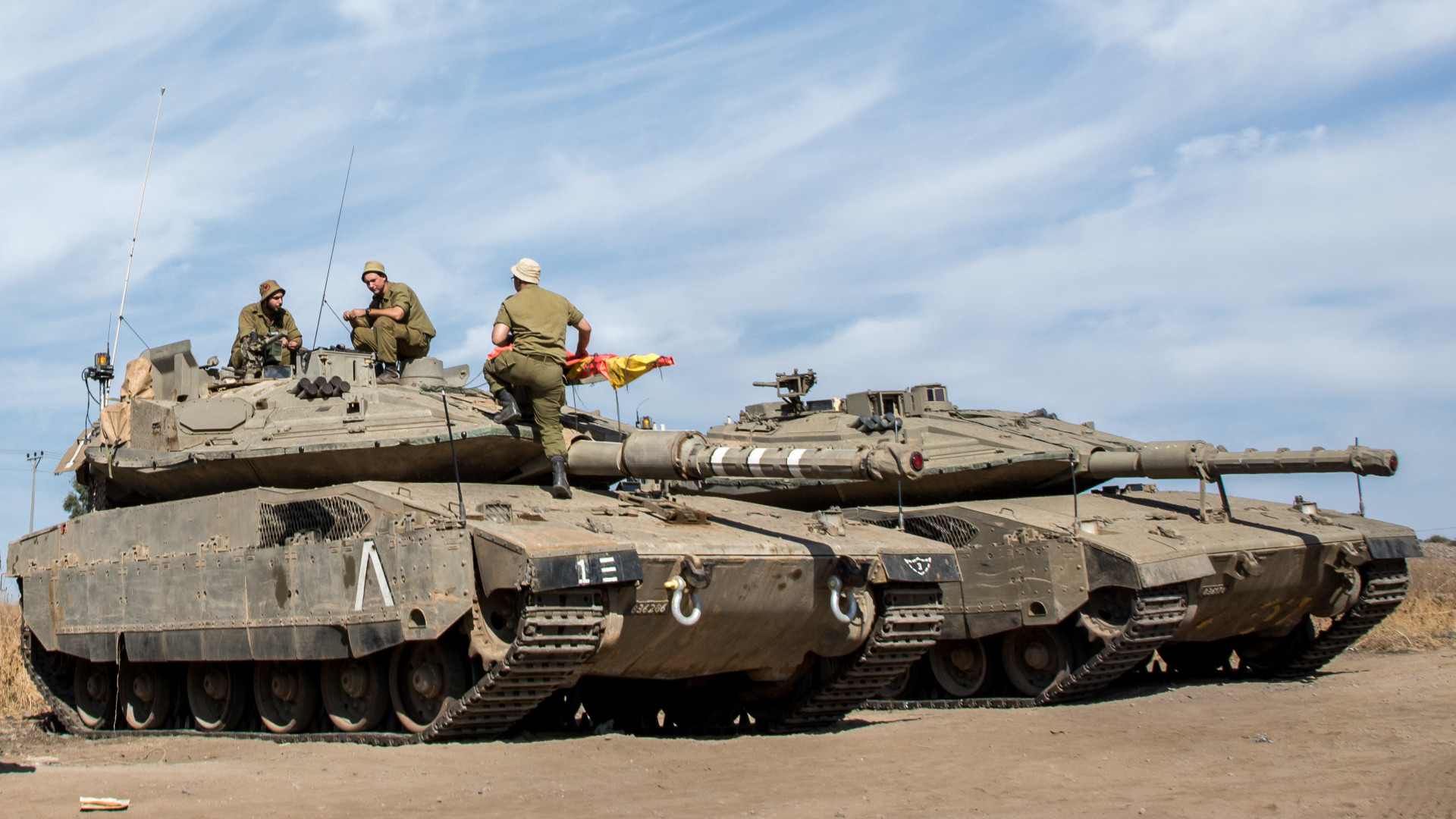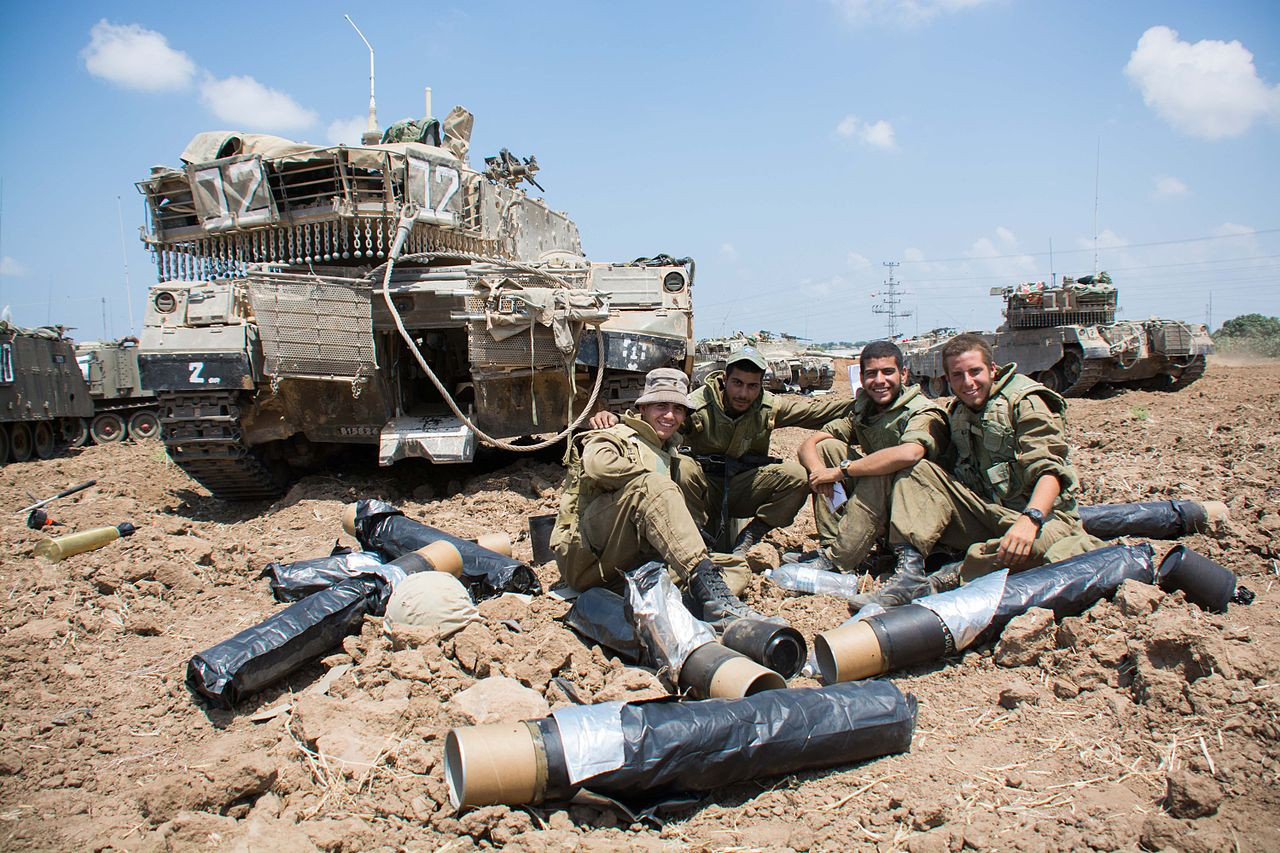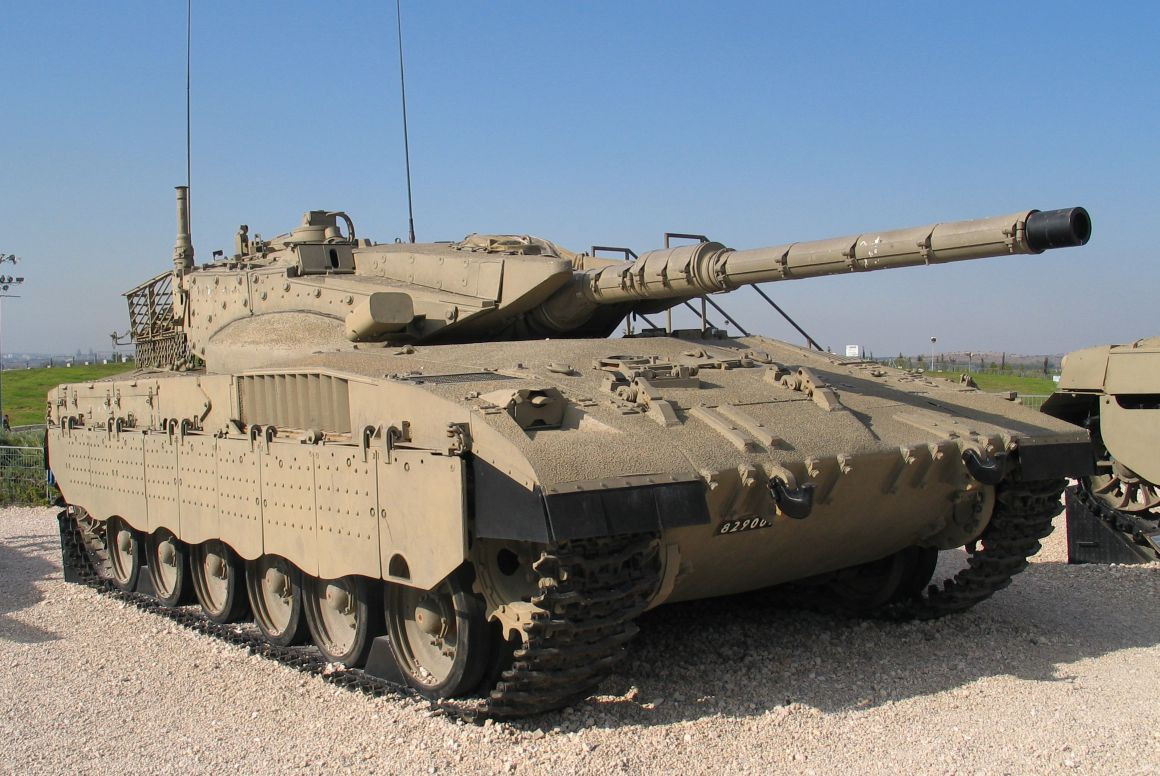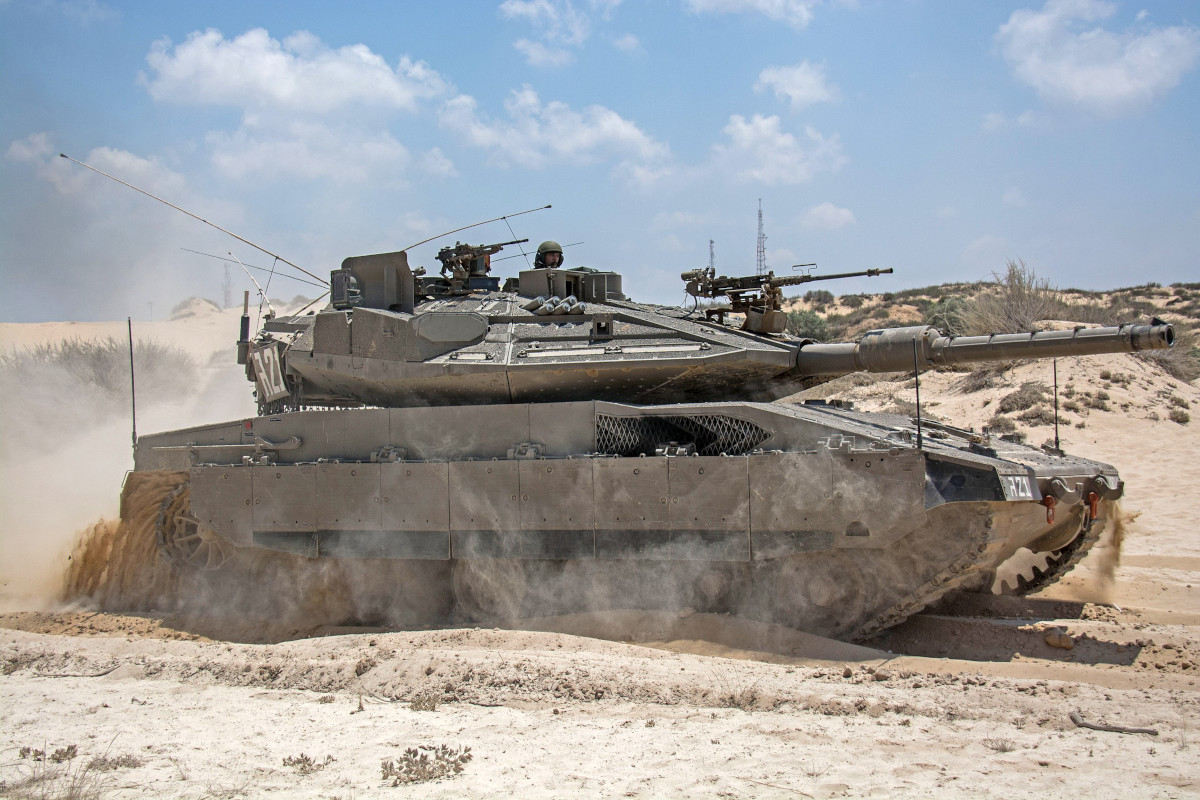The Israeli government says that it is in very active talks with two countries about what could be the first confirmed international sales of variants of the country’s unique Merkava main battle tank. The identities of those nations have not been disclosed, but one of them is in Europe, which has already led to speculation that Merkavas may eventually be bound for Ukraine.
Yair Kulas, the head of the Israeli Ministry of Defense’s International Defense Cooperation Directorate, also known by its Hebrew acronym SIBAT, disclosed the potential foreign Merkava sales in a recent interview with the Calcalist newspaper. SIBAT work includes negotiating the sale of weapon systems and other materiel from Israel Defense Forces (IDF) inventory.

“There are two potential countries with which we are holding advanced negotiations [on a sale of the Mervaka tanks],” according to a translation of a part of the interview published by The Times of Israel. ”I am barred from naming them, but one is on the European continent.”
Kulas did not say what variants of the Merkava might be on offer, but The Times of Israel noted that the IDF has largely transitioned to the latest Mk 4 variant. So, older Mk 3s could be available for sale now. Mk 2s, the last of which were only withdrawn from service in the late 2010s, would be another possibility.
The origins of the Merkava – which means chariot in Hebrew – trace back to experiences from the Six-Day War in 1967 and a desire for a more advanced and better-protected main battle tank than older Western designs that were in Israeli service at the time. Development of the new Israeli tank began in the early 1970s drawing further lessons learned from the Yom Kippur War in 1973.

The resulting core design remains unique among main battle tanks in service anywhere in the world. Unlike most modern tanks, the Merkava’s engine is located in the forward part of the hull, better shielding it from enemy fire, and the turret is positioned toward the rear.
It also has a rear compartment that is more in line with an infantry fighting vehicle. This allows it to carry up to 10 fully-armed troops in addition to its crew of four, and even act as an armored ambulance if required.

The original Mk 1 variant, which entered service in 1979, weighed around 60 tons and had a top speed on improved roads of just under 29 miles per hour (46 kilometers per hour). It was armed with a 105mm main gun and could be fitted with up to three 7.62x51mm machine guns. In additional traditional rounds, the 105mm could also be used to fire LAHAT laser-guided anti-tank missiles.
A 60mm mortar was often carried in the rear compartment. The mortar could be used to fire high-explosive rounds, giving the crew an indirect fire capability, or smoke rounds to help conceal the tank from enemy fire. Illumination rounds could also be fired to help during combat at night.

The inclusion of the mortar was a by-product of experiences Israeli forces had with British-made Centurion tanks, which were fitted with a 2-inch mortar that could be fired from inside the turret, primarily for launching smoke rounds.
In 1983, the IDF began receiving improved Mk 2 variants, which incorporated a number of improvements, including improved armor and powertrain components. The new version also moved the 60mm mortar inside the turret, allowing the crew to fire it from inside the hull even while buttoned-up.

Additional subvariants of the Mk 2 added new thermal optics to improve the tank’s night-fighting capabilities and add-on armor packages. The Mk 2D version took the armor upgrades one step further with the introduction of a composite armor package with modular sections that were easier to replace after being damaged.
The Mk 3 variant, introduced in 1989, represented a more significant boost in all-around capability. This version was the first to be armed with a larger 120mm main gun. It also received a more powerful engine, further improved drive train, and significant fire control and optics upgrades. As a result, the Mk 3 is some five tons heavier than the original version, but is also faster, with a top road speed of around 37 miles per hour (60 kilometers per hour).
A number of subvariants of the Mk 3 were also developed with further upgrades sensors and other improvements.

The newest Mk 4 builds on the improvements of the Mk 3. It features an improved 120mm gun and a redesigned hull that is needed to help accommodate its even more powerful engine. It also has improved sensors, battle management, and data-sharing capabilities.

Starting in 2009, the IDF began fitting Mk 4 variants with the Trophy Active Protection System (APS), giving the tanks another layer of protection against anti-tank guided missiles and other infantry anti-armor weapons.

A number of Merkava derivatives have also been developed and fielded, including a turretless heavy armored personnel carrier called Namer and the Ofek command vehicle.

Altogether, with all this in mind, it is not surprising to learn that multiple countries are currently interested in acquiring even older variants of the Merkava. Though neither of the parties that are actively in talks with the Israeli Ministry of Defense now have been identified, there have been reports in the past that Colombia and Turkey have been interested in buying examples. Reports that Singapore purchased dozens of Merkavas in the mid-2010s have never been confirmed.
Last year, the Philippines did receive two Merkava-derived Armored Vehicle Launched Bridges. That raises the possibility that country might be the non-European nation now in talks to buy actual Merkava tanks.
The European country that SIBAT head Kulas mentioned as having an active interest in buying Merkavas now could be Turkey, but this seems less likely to be the case than it might have in the past. Turkey has worked with Israel previously on variant defense programs, including upgrade packages for older tanks, especially variants of the U.S.-made M60.
Though they have warmed more recently, Turkish-Israeli relations had significantly cooled in the past decade or so. The Turkish Army has been pushing ahead with the acquisition of a domestically developed main battle tank called Altay. Turkish defense firms like Roketsan are continuing to offer new M60 upgrades, as well.

There are various European countries who might now be in the market for new tanks, including smaller nations still operating variants and derivatives of older Soviet designs. Croatia, with its T-72-based M-84A4 tanks, is one example and already has a history of engaging with Israel over the potential sale of second-hand, but higher-end military hardware. In the late 2010s, the Croatian Air Force had been in line to get ex-Israeli F-16A/B Netz fighter jets before the U.S. government blocked that deal.
Of course, the big question in the current geopolitical context is whether the unnamed European country is Ukraine. There has already been speculation that this could be the case, but so far nothing has emerged to indicate this is the case. Another country in Europe could of course also buy these tanks and then transfer them to Ukraine.
It’s no secret that the Ukrainian government has been actively seeking to acquire more modern tanks to help in the fight against invading Russian forces. Ukraine’s Western partners have now begun supplying various types, including British Challenger 2s and German Leopard 2s, but those deliveries are taking time. U.S.-made Abrams, in particular, are still months away from being delivered.
At the same time, Ukraine’s military is now actively engaged in a major counter-offensive where heavy armor is already playing an important role. That has, unsurprisingly, resulted in notable combat losses. The United States and other countries have pledged just this week to keep up the flow of tanks and other heavy armored vehicles to the Ukrainian armed forces.
Interestingly, in his recent interview, SIBAT head Kulas highlighted the speed with which Israel could supply retired Merkavas as a key selling point.
“The world is chasing systems, and production processes require time, and not everyone has the time to wait,” said.
At the same time, it is worth noting that the Israeli government has been very reticent to provide explicit military assistance to Ukraine since Russia launched its all-out invasion in Febraury 2022. Israeli authorities announced a policy shift of sorts in March, but stressed that approval would only be granted for sales of “defensive” systems like those used to protect against drone attacks.
A tranche of classified U.S. government documents that recently emerged online included one that indicated American officials believe that Israel could be pressured into changing its position further. Pictures have also been circulating online in the past week or so claiming to show a Ukrainian soldier with an Israeli-made Spike anti-tank missile launcher, but the circumstances surrounding those images remain unclear and unconfirmed.
On top of everything else, Kulas only confirmed that negotiations about Merkava sales are progressing. Whether those deals are finalized remains to be seen.
Altogether, only time will tell if Israel will actually secure its first foreign sales of it unique Merkava tank and whether Ukraine may be among the recipients.
Contact the author: joe@thedrive.com
